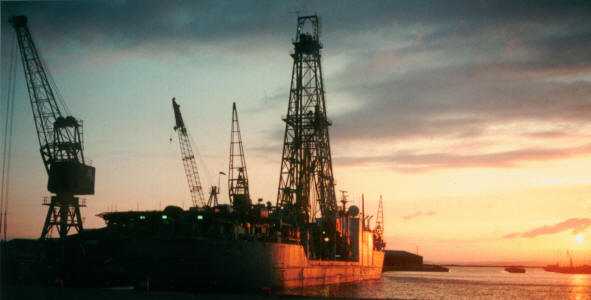
Plio-Pleistocene Paleoclimate Change Research Dr. Joseph D. Ortiz Kent State University, Department of Geology On glacial-interglacial timescales,
variability in Earth's climate system is largely
explained by the Milankovitch-Croll
hypothesis, which postulates that glacial
interglacial climate changes occur in response to
cyclic variations in the geometry of Earth's orbit
around the sun, which control changes in solar
insolation (solar output per unit time per unit area).
Milankovitch-forcing occurs on time scales
ranging from 20,000 to 400,000 years per cycle,
although longer cycles in solar insolation that are
unresolved by current paleoclimate records may be
present. On longer timescales, with trends or cycles
of millions to billions of years in duration,
large-scale changes in solar luminosity (total solar
output), tectonic shifts, and biogeochemical cycling
in response to the evolution of Earth's biosphere
control the long-term, "Tectonic-scale" climate state.
On shorter timescales (<20,000 years per cycle),
the interplay of more subtle changes in solar
irriadiance (solar output per unit area), volcanic
forcing, internal oscillations of the climate system
and anthropogenic forcing drive climate variability.
The most important of these "short-term" changes has
been anthropogenic-forcing of the climate system from
the Industrial Revolution to present.
I've been fortunate to receive training from John Imbrie, Warren Prell, Alan Mix, and Nick Pisias, researchers who were instrumental in the development of our understanding of Milankovitch-scale climate change as part of the CLIMAP and SPECMAP projects. I apply a quantitative, time series analysis approach to study of the interactions of various components of the Earth's climate system on glacial-interglacial timescales. As with my study of climate variability on timescales shorter than <20,000 years per cycle, I make use of sediment physical properties measurements (visible derivative spectroscopy, laser particle size analysis, and elemental analysis by x-ray florescence) to reconstruct climate variability on glacial-interglacial timescales. These methods are rapid, require little sample preparation and yield, rich, multivariate data sets that can be unmixed, or decomposed using statistical methods to partition variance related to how different processes have influenced a location through time. I also employ micropaleontological and stable isotope analysis of foraminifera as needed to answer questions about glacial-interglacial climate change. Although I am interested in global processes, I address these questions through detailed regional reconstructions and have worked in most of the World Ocean's major basins. Apply online to the Graduate Program in Geology at Kent State University. More information about the Kent State University Geology Graduate program. |